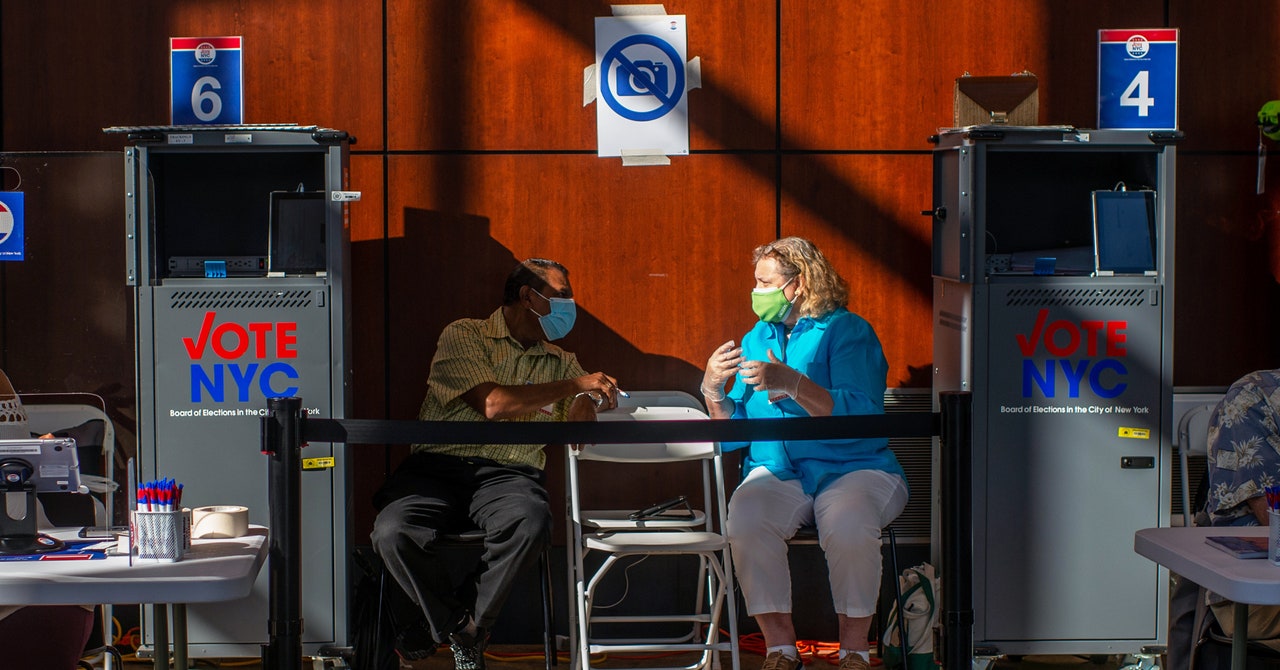
On the first day of class, Daniel Ullman—a mathematician at George Washington University—has his students run an exercise. Ullman presents a hypothetical three-way election, with candidates designated as A, B, and C vying for the win. Then he gives his students 99 voter profiles. This one prefers A over B and B over C. The next one wants A over C and C over B And et cetera, 99 times.
Then the class runs three different kinds of elections—a “plurality,” in which whoever gets the most votes wins; a “Condorcet,” with successive head-to-head matchups; and “ranked choice,” in which voters can indicate their order of preference and a winner gets calculated through successive talleys.
You can guess what happens in Ullman’s exercise. Each method of voting results in a different winner. None of the methods is wrong. Nobody cheated. But still: Same votes, different counting, different winners. That seems bad, right? But as a mathematician, Ullman knows better than most that numbers don’t always add up to truth. “I make the data close,” he says, describing how he designed those 99 made-up voter profiles to show how different, good-faith math can change the future. “Elections are easy when they’re landslides. If all the voters agree, we don’t have to worry about these issues. But when elections are close, these things matter. And elections being close is very common in the US.”
The fact is, democracy only promises to reach for a more perfect union—not an actually perfect one. For decades, a field of study called social choice theory has tried to find new ways of rocking the vote that rocked even harder. Finicky electioneers have tinkered with the ways big groups of people can express their preferences (approval votes! Quadratic votes! Judgment votes!) in a fair, equitable, feasible way—to make sure the “winner” is actually the winner. Ranked choice voting is the latest popular approach, maybe even better than the plurality-type winner-take-all elections most Americans know best (for some values of “better,” anyway). It’s how New York City is choosing a Democratic candidate for mayor right now, and if that election goes well, ranked choice voting may be the way you cast your next ballot, too.
If your goal for democracy is to get the greatest amount of participation from voters—creating the most representative sample of the body politic—then elections are the survey mechanism for capturing their true desires. But elections are also a cost-benefit proposition. The cost to the voter is the time it takes them to figure out whom to vote for and actually do the voting—by mail or in person. (In some places that cost is higher than in others, in longer lines or fewer options for, say, early or by-mail voting, and higher for certain kinds of people, often poor people and people of color.) The benefit is getting a policy enacted, or a desirable person in a position of representative authority. A good system would reduce the costs, making it easier to vote, and it’d increase the benefits, making a vote more reflective of the desires of the voter and, ideally, converting those desires into laws or action.
So while Americans are most familiar with plurality votes, that kind of ballot might not most accurately reflect their desires. That’s especially true if the election has a bunch of people on a ballot, not either-or but a panoply of options. In the version of ranked choice voting used in New York—also sometimes called an instant run-off—if nobody gets more than 50 percent of the votes on the first tally, the candidate with the fewest votes gets eliminated and their first place votes go to whoever those voters ranked second. Then there’s another round of counting. As the attenuated San Francisco mayoral election of 2018 showed, it can take a while.


